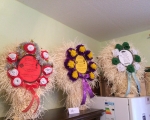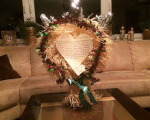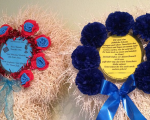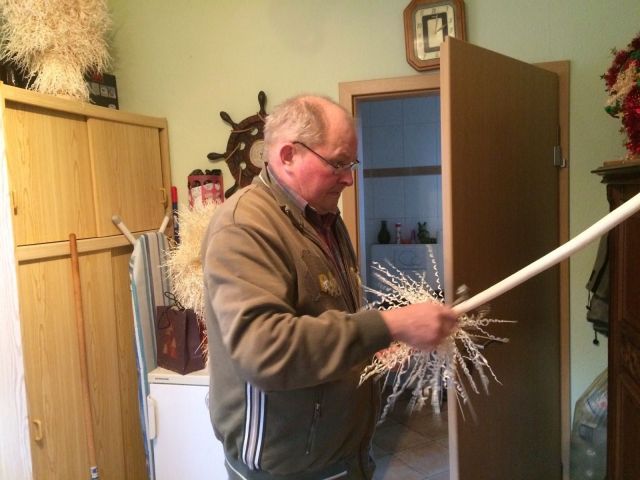Tunschere
The "Tunschere"
If you live near Bippen in the north of Osnabrücker Land, it is quite possible that you will stumble across a so-called Tunschere (literally tun scissors) on your doorstep at the beginning of January. This is a special New Year's greeting that is brought by friends and relatives every year. But what exactly do tunschere look like and what is this special custom all about?
Anyone who now thinks of a sharp pair of scissors, which might even develop into a dangerous stumbling block, has cut themselves. On the contrary, the Tunschere is a wonderful decoration that is always made by hand and requires a high degree of skill. Using a special device, paper-thin wooden curls are first shaved from dried wooden sticks. These are placed on a perforated disc and decorated with paper flowers and a New Year’s wish – and the Tunschere is complete! It can easily take up to three days to complete a single Tunschere.
After the New Year's greeting has been placed in front of the front door, it is important to quickly hide. The residents of the house then traditionally have the task of looking for the bearers of the Tunschere and inviting them in to eat as soon as they are found.
This traditional custom dates back at least to the 11th century. The name comes from the Tunscharen. That's what the villagers who lived at the boundary walls of a farm were called. As a gesture of affection, they brought a bouquet of wooden flowers and colorful ribbons to the manor house at the turn of the year.
This video shows how to make a Tunschere (in German):
Photos: Sandra Fenstermann




